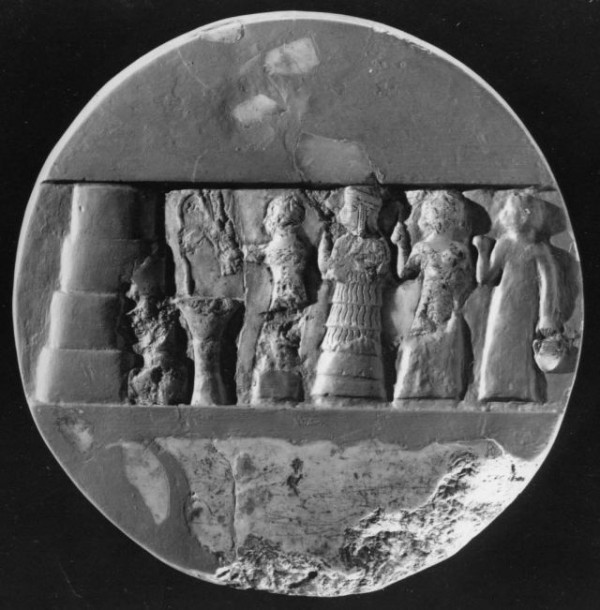On the occasion of international womens day, pressenza presents an article about the first known female writer. This article was published by LEBENSWELT – Centre for Humanist Studies: http://women-make-history.jimdo.com/
En-hedu-Ana was revered as the most important religious figure of her day.
She is the first author either gender known by name in human history, because she wrote the first texts that can be attributed to a person.
She was the high-priestress during the reign of Sargon of Akkad (Sargon the Great). While Sargon of Akkad united Sumer and Akkad and conquered the first empire in history, Enheduanna melded the Sumerian with the Akkadian gods to create the stability the empire needed to thrive.
Through her powerful incantations to Inanna, the goddess of Love and War, she changed the course of history and was remembered for centuries after her death. Her writing is so intricate, scholars call her the “Shakespeare of Sumerian literature”. Her hymns function as multi-layered incantations, interweaving political, personal, ritual, theological, historical and legal dimensions.
Enheduanna’s name translates as ‘High Priestess of An’ (the sky god) or ‘En-Priestess, wife of the god Nannar’.
She is best known for her works Inninsagurra, Ninmesarra, and Inninmehusa, which translate as ‘The Great-Hearted Mistress’, The Exaltation of Inanna’, and ‘Goddess of the Fearsome Powers’, all three powerful hymns to the goddess Inanna, a personal devotion to the goddess Inanna and also detailing Enheduanna’s expulsion from Ur. As well as a collection of 42 hymns addressed to temples across Sumer and Akkad including Eridu, Sippar and Esnunna known as the “Sumerian Temple Hymns” that are regarded as one of the first attempts at a systematic theology. These hymns re-defined the gods for the people of the Akkadian Empire and helped provide the underlying religious homogeniety.
For over forty years Enheduanna held the office of high priestess, even surviving an attempted coup against her authority by the Sumerian ruler Lugal-ane who forced her into exile for a brief time.
In addition to her hymns, Enheduanna is remembered for the forty-two poems she wrote reflecting personal frustrations and hopes, religious devotion, her response to war and feelings about the world she lived in.
Enheduanna is well-known from archaeological and textual sources. Two seals bearing her name, belonging to her servants and dating to the Sargonic period, have been excavated. In 1927, Sir Leonard Wooley found the Enheduanna calcite disc in the Gipar at Ur, which was the main residence of the En-Priestess.
The three inscriptions on the disc identify the figures depicted: Enheduanna, an officer, her major domo and her scribe. The royal inscription on the disc, reads: “Enheduanna, zirru-priestess, wife of the god Nanna, daughter of Sargon, king of the world, in the temple of the goddess Innana.” The figure of Enheduanna is placed prominently on the disc emphasizing her importance in relation to the others and, further, her position of great power and influence on the culture of her time.
The full article with pictures and links you can find here






